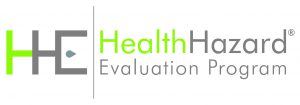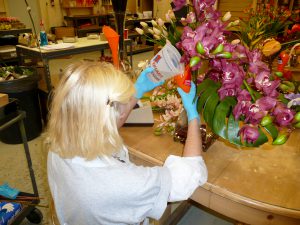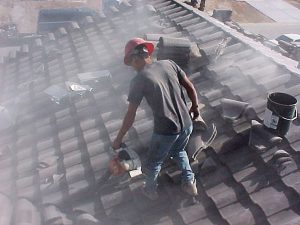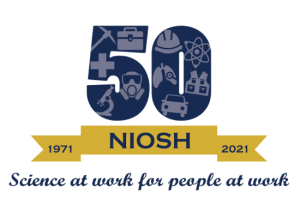Health Hazard Evaluation Program
Posted on by The Occupational Safety and Health Act gives NIOSH the authority to conduct evaluations at workplaces to identify potential workplace hazards. Through the NIOSH Health Hazard Evaluation (HHE) Program employees, employers, and union representatives can request an evaluation of potential health hazards in their workplace. The evaluations are done at no cost to the requestor or the workplace. NIOSH does not enforce workplace health and safety standards; however, after the evaluation is complete, NIOSH provides recommendations on ways to reduce or eliminate the identified hazards.
The Occupational Safety and Health Act gives NIOSH the authority to conduct evaluations at workplaces to identify potential workplace hazards. Through the NIOSH Health Hazard Evaluation (HHE) Program employees, employers, and union representatives can request an evaluation of potential health hazards in their workplace. The evaluations are done at no cost to the requestor or the workplace. NIOSH does not enforce workplace health and safety standards; however, after the evaluation is complete, NIOSH provides recommendations on ways to reduce or eliminate the identified hazards.
Since the HHE program started in 1972, NIOSH has completed evaluations of over 16,700 requests from workers, unions, and employers. The HHE Program has conducted evaluations in all 50 states and the U.S. territories of Puerto Rico and the U.S. Virgin Islands. Between 2015-2020, NIOSH received 1,383 HHE requests and conducted 243 site visits in 32 states.
The HHE Program has expertise in many areas, including hazard identification, exposure assessment, symptom surveys, medical testing, and engineering controls. Health hazards that have been assessed include:
- Physical agents such as heat, noise, and radiation
- Biological agents such as anthrax and mold
- Infectious diseases such as tuberculosis and influenza
- Chemicals such as solvents, metals, and particulates
- Musculoskeletal stressors
-

Photo by NIOSH. In 2008, HHE investigators evaluated chemical and particle exposures during firefighter training. Psychosocial issues such as work stress
NIOSH has conducted HHEs in nearly every industry sector in small and medium sized businesses and large corporations. Over the years, the HHE requests have changed. For example, from the 1970s through the 1990s, the manufacturing sector accounted for 30 to 40 percent of HHE requests. Today, manufacturing accounts for less than 15 percent. From 2000-2020, over half of the requests received were from the services sector.
HHE Reports and Outreach
The HHE Program primarily publishes their evaluation findings and recommendations in HHE reports. The reports include key findings and recommendations on what the workplace can do to minimize the identified hazards as well as technical information about the investigation background, methods, and results. HHE reports are available on the NIOSH website and can be searched by title, industry, hazard, health effect, state/region, and date. In total, the HHE Program has produced 3,384 numbered HHE reports. From 2015-2020, the HHE Program published 157 new HHE reports, and there were over 147,000 downloads of HHE reports.
To communicate the information learned through HHEs, the HHE Program also produces peer-reviewed publications, trade magazine articles, website content, blogs, and presentations at conferences and meetings. The HHE Program also shares information on their Facebook page. As of 2019, the HHE Program Facebook page had over 32,000 followers from 49 different countries.
Impact
New and emerging workplace hazards and prevention measures are often identified through the HHE Program. Findings and recommendations from HHEs are used at the workplaces (by employers and employees) and by other agencies and organizations. HHEs have also helped frontline emergency responders do their jobs safely following disaster situations such as hurricanes and floods.
Examples of the impact of the HHE program follow.
Indoor Environmental Quality
The health of those who work in damp buildings has been a concern for many years due to a broad range of reported building-related symptoms and illnesses. Research has found that people who spend time in damp buildings are more likely to report health problems such as respiratory symptoms, allergic rhinitis (hay fever), respiratory infections, hypersensitivity pneumonitis, or development or worsening of asthma. The HHE Program has evaluated numerous buildings and found that, if building dampness is addressed promptly, these problems can generally be corrected using standard remediation practices. NIOSH developed an Alert, Preventing Occupational Respiratory Disease from Exposures Caused by Dampness in Office Buildings, Schools, and Other Nonindustrial Buildings, that provides information on respiratory disease related to indoor dampness and recommendations for preventing and remediating damp buildings. NIOSH also developed dampness and mold assessment tools for use in general buildings and schools as an inexpensive way to track, record, and compare conditions over time.

Musculoskeletal Disorders (MSDs)
The HHE Program identified hazards causing disorders of muscles, tendons, and joints (musculoskeletal disorders) in diverse industries, with 50 percent occurring in manufacturing. These HHEs led to reviews and practice documents and have informed OSHA and other regulatory bodies in rule-making. The HHE Program’s body of work on this topic has stimulated major research activities within and outside NIOSH on work-related musculoskeletal disorders. NIOSH has used these HHEs as the basis for ergonomic resources for employers and employees, including for construction workers and farm workers.
Latex Gloves in Healthcare
Several HHEs identified powdered latex gloves as a risk factor for latex allergy. Prior to HHE involvement, there was widespread use of powdered latex gloves in the healthcare industry. The HHE investigators helped create the NIOSH Alert: Preventing Allergic Reactions to Natural Rubber Latex in the Workplace. Healthcare professional organizations cited the Alert in making recommendations to provide alternatives to powdered latex gloves. Massive adoption of powder-free latex gloves followed. In addition, because of issues raised in the Alert, FDA subsequently banned use of powdered medical gloves in the U.S.
Hypersensitivity Pneumonitis and Metalworking Fluids
HHE investigations associated hypersensitivity pneumonitis (HP), a rare but severe condition, with metalworking fluid (MWF) exposure. HHE reports had a significant input to the NIOSH Criteria for a Recommended Standard: Occupational Exposure to Metalworking Fluids, which recommended the first authoritative exposure limit for MWFs. HHEs have been important in defining the effects of MWFs and providing control technologies in hazardous workplaces where no OSHA standards or guidelines have been established to control exposures.

Silica in Roofing and Granite Countertop Manufacturing
Four HHEs in the early 2000’s described the hazard of silicosis from silica in roofing tiles and provided prevention guidelines. CPWR—The Center for Construction Research and Training used this publication in a curriculum to train 20,000 roofers. More recently, the HHE Program investigated the emergence of silicosis in stone countertop manufacturing, which led to a joint OSHA-NIOSH Hazard Alert.
Flavoring-related Lung Disease Among Microwave Popcorn Workers
A series of HHEs conducted between 1985-2006 identified a pulmonary disease caused by diacetyl, a chemical used for flavorings such as butter flavoring. The findings were used in the NIOSH Criteria for a Recommended Standard: Occupational Exposure to Diacetyl and 2,3-Pentanedione, and California OSHA used the data to develop a standard to protect workers. ConAgra, a major manufacturer, initiated pulmonary surveillance and industrial hygiene reviews to reduce exposure. States alerted pulmonary physicians to diacetyl and bronchiolitis obliterans, and there has been the voluntary removal of diacetyl from manufacturing processes in some facilities.
Flock Worker’s Lung
Flock consists of short fibers that are cut and glued to backing material such as cloth to provide a fuzzy, carpet-like surface texture. In 1996, the HHE Program identified inhalation of flock dust as the cause of a serious lung disease at a nylon flock processing plant. HHEs were performed in several other flock processing plants. NIOSH has made recommendations to companies that manufacture flock and make flock containing products that aim to reduce workers’ exposure to flock dust.
Lead Exposure in Multiple Industries
From 1978 to 1995, 337 HHEs were conducted on lead exposure in a wide array of industries. Information from the HHEs regarding exposures and control measures were used by the evaluated industries, and OSHA consultation and enforcement activities.
Carbon Monoxide (CO) Exposure in Boating
The HHE Program assisted the National Park Service and U.S. Coast Guard in investigating CO poisonings on and around houseboats using gasoline-powered generators. Following these investigations, NIOSH worked with major houseboat and generator manufacturers to evaluate novel engineering controls to reduce CO concentrations in occupied areas on houseboats.

Emergency Response
The HHE Program has served an important role in the response to natural and manmade disasters. HHE personnel have provided extensive assistance and expertise to national emergencies, including the Exxon Valdez oil spill, 9/11, Hurricane Katrina, Deepwater Horizon oil spill, Ebola, COVID-19, and more. For example, HHE investigators participated in over 25 investigations involving potential anthrax contamination through the U.S. postal system and helped design reliable standardized protocols for sampling.
A 2009 Institute of Medicine review of the HHE Program stated that “the HHE Program has had substantial impact on policy and the development of regulation to protect workers in several high-profile areas. Furthermore, in several high-profile areas, the HHE Program contributed knowledge that led to changes beyond those required by law or regulation on the part of industry. These changes have led to positive impacts on worker health and safety.” The review also noted “the HHE Program is positioned to respond quickly to emerging health hazards…” and “that the HHE Program has a very good reputation (among those who know about it) and that it is readily called upon in the event of new, emerging, and poorly understood problems.”
For 50 years, the HHE program has played an important role in protecting worker safety and health. As we look forward to the next 50 years, the program will undoubtedly remain a critical tool in addressing known and emerging hazards in the workplaces of the future.
 Several HHE program staff contributed to this blog.
Several HHE program staff contributed to this blog.
This blog is part of a series for the NIOSH 50th Anniversary. Stay up to date on how we’re celebrating NIOSH’s 50th Anniversary on our website.
Posted on by

